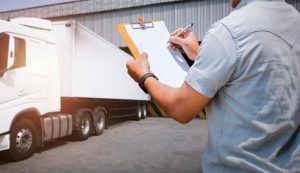Buying a used car can be both exciting and intimidating, especially if you don’t know the vehicle’s entire history. Buying a flood-damaged car is one issue that can pose a significant risk to your investment.
To avoid making this costly mistake, It is crucial to do your research and take the necessary precautions. In this article, we’ll go over everything you need to know about buying a flood-damaged car.
Key Takeaways
- Flooded vehicles may appear to be fine on the surface, but they can be dangerous to drive or ride in due to hidden risks.
- Title washing is a deceptive practice in which a vehicle’s title is altered to conceal significant damage, such as flood damage, from potential buyers.
- When looking for a used car, you must take precautions to avoid purchasing a flood-damaged vehicle.
Table of Contents
The Dangers Of Flood Damage Cars
Flood-damaged vehicles may appear to have only cosmetic damage, but they can be ticking time bombs that pose serious risks to those who drive or ride in them.
Electrical System Damage
The electrical system of a car can be severely damaged if it is submerged in floodwater. Water can corrode and short-circuit electrical components such as the battery, starter motor, alternator, and various sensors. This damage can cause the car’s electrical system to malfunction, affecting a variety of aspects of the vehicle, including engine performance, safety features, and overall reliability.
Mechanical System Damage
Flood-damaged vehicles can also sustain severe mechanical system damage, particularly to the engine, transmission, and brakes. Water can enter the engine and contaminate the oil, causing internal component damage and premature engine failure. Water in the transmission can cause gears to seize, resulting in an expensive repair. Water can also cause brake damage, decreasing its effectiveness and raising safety concerns.
Furthermore, floodwater can damage the suspension, exhaust system, and other mechanical parts, affecting the car’s overall safety and performance.
Health Risks
Floodwaters can contain various hazardous substances, such as sewage, chemicals, and bacteria, which can seep into the upholstery, carpeting, and car ventilation system. People who come into contact with these contaminants may experience respiratory problems, skin irritation, and other health problems.
Title Washing
Title washing is a practice in which the title of a vehicle is changed to hide the fact that the car has been severely damaged, such as flood damage. This practice is illegal and has the potential to mislead unsuspecting buyers into purchasing a vehicle with significant damage that is potentially unsafe. Title washing can involve deceptive practices such as transferring the vehicle to another state where the flood damage is not disclosed or altering the title to appear as if the car was not severely damaged.
This can pose serious safety risks for buyers who are unaware of the vehicle’s actual condition. To avoid being a victim of title washing, it is important to research and inspects a car before buying it.
How To Identify a Flood Damage Car
There are several things you can look for to identify a flood-damaged car, some of which are:
Check For Unusual Odors
A musty or moldy odor could indicate water damage, especially if the seller is using air fresheners or cleaning solutions to mask it. Run the air conditioner to see if it emits a moldy odor.
Check For Water Lines
If the car dealer has not attempted to conceal flood damage, you may notice water lines on the car exterior, which can indicate the water level in which the vehicle was submerged. If you can’t see any water lines, remove the carpet and look for mud to check for dampness inside the car.
Check For Rust
Flood-damaged vehicles often have more rust than expected for their age, particularly in unusual places such as the console area and around doors. Look for rust on the car’s underside and inside the hood.
Check The Electrical System
Because water can cause severe damage to electronics, test everything in the car, including the lights, audio system, and turn signals. The car may have water damage if they don’t work or behave strangely.
Check For Smoke And Odd Noises
When buying a used car, smoke should always be a concern, but engine smoke is a more concerning warning sign if you suspect the vehicle has been flooded. Unusual noises from the brakes or steering wheel could indicate that sand or dirt has gotten into these systems. Strange sounds coming from various parts of the car could indicate flood damage.
Check The Interior
Check behind door panels and other hard-to-reach areas for moisture or mildew, and be wary of brand-new upholstery in a used car, as it could indicate flood damage.
How To Avoid Buying a Flood Damage Car
If you’re looking for a used car, it’s critical to understand how to avoid buying a flood-damaged vehicle. Flood damage to a car’s mechanical and electrical systems can cause significant, long-term damage, resulting in costly repairs down the road. Here are some ways to protect yourself when purchasing a used car.
Check The Vehicle History
It is essential to look into the vehicle history of any used car you are considering purchasing. You can obtain a detailed report of the car’s history, including any accidents, repairs, and title changes, by using services such as Carfax or AutoCheck. These reports also indicate whether the vehicle has been reported as flood-damaged. If the vehicle history report reveals that the car has been flooded, it is best to avoid purchasing it.
Have The Car Inspected
Even if the vehicle history report shows no signs of flood damage, having the car inspected by a reputable mechanic is still crucial. A thorough inspection can reveal hidden damage that is not visible to the naked eye. During the inspection, the mechanic will look for signs of water damage such as rust, corrosion, and mold.
They will also inspect the mechanical and electrical systems, including the engine, transmission, brakes, and suspension. They will also inspect the car’s upholstery, carpeting, and ventilation system for signs of water damage or mold.
Check The Title
Another important step in avoiding a flood-damaged car is to check the title. A title is a legal document that establishes ownership of a vehicle. When a car is flooded, insurance companies frequently declare it a total loss, and the title is labeled “flood-damaged” or “salvage.”
When purchasing a used car, it is vital to check the vehicle’s title before making a purchase. The title will indicate whether the car has been labeled as flood-damaged or salvaged. Be wary of cars with “clean” titles that have been transferred between states, as this could indicate title washing.
Buy From a Reputable Dealer
Another option is to purchase a used car from a reputable dealer to avoid purchasing a flood-damaged vehicle. Reputable dealers typically thoroughly inspect their used cars before selling them. They also provide a warranty or guarantee of the car’s condition, giving you peace of mind.
When looking for a reputable dealer, do your homework. Check reviews from previous customers and research the dealer’s history. Consider purchasing from a dealer certified by the National Independent Automobile Dealers Association, as they must adhere to strict ethical and operational standards.
How Flooded Cars End Up On The Market
Flooded cars, also known as water-damaged vehicles, can end up on the market in a variety of ways. One common method is when a natural disaster occurs, such as a hurricane or flood, and flood-damaged cars are sold at auctions or salvage yards. These vehicles may be purchased by individuals who intend to repair them and resell them to unsuspecting buyers.
Fraud is another way for flooded cars to end up on the market. Some sellers may attempt to conceal the water damage by cleaning and drying the car, replacing damaged parts, and even altering the vehicle history report. They may then resell the vehicle at a higher price to an unwary buyer who believes they are getting a good deal.
In some cases, flooded cars may end up on the market due to the seller’s ignorance. Some sellers may be unaware that the vehicle they are selling has been flooded, particularly if they bought it at an auction or salvage yard.
It is critical to be aware of these potential sources of flood-damaged vehicles and to exercise caution when purchasing a used vehicle. You can avoid falling victim to the sale of a flooded car by exercising caution and thoroughly inspecting the car, checking the vehicle history report and title, and purchasing from a reputable dealer.
Can a Flood-Damaged Car Be Salvaged?
Yes, a flood-damaged car can be salvaged, but the extent of the damage must be considered. The cost of repairing the car often exceeds the value of the vehicle, rendering it a total loss. Insurance companies may then sell the vehicle to a salvage yard, selling the auto for parts or auctioning it off for rebuilding.
If the damage is repairable and the vehicle is salvageable, it can be returned to its pre-flood state. However, this can be a time-consuming and costly process. To avoid further damage and mold growth, the car must be completely dried out. Mechanical and electrical systems must also be thoroughly inspected and, if necessary, repaired.
FAQs About Flood Damage Cars
Is a flood-damaged car repairable?
It is determined by the extent of the damage. A flooded car may be repairable in some cases, but it is usually very expensive and time-consuming. The damage can go beyond the visible parts of the car, affecting the electrical and mechanical systems, which can be difficult and expensive to repair. In many cases, replacing the car is more cost-effective than repairing it.
Should I try and start the engine of a flooded car?
No, you should not try to start a flooded car’s engine. Starting the engine can result in additional damage to the vehicle’s electrical and mechanical systems. Instead, have the vehicle inspected by a mechanic who will assess the damage and advise you on the best course of action.
How do I get water out of a car?
Water removal from a flooded car can be difficult, and it is best left to professionals. If the car is not severely damaged, you can remove the water from the interior with a wet/dry vacuum. If the vehicle was submerged, the upholstery and carpeting will almost certainly need to be removed and dried separately.
How can I check the vehicle history of a used car?
You can check a used car’s vehicle history by using services like Carfax or AutoCheck to obtain a detailed report of the car’s history, including any accidents, repairs, and title changes. These reports also state whether or not the vehicle was reported as flood-damaged.
Are there health risks associated with driving a flood-damaged car?
Yes, there are potential health risks associated with driving a flood-damaged vehicle. Floodwater can contain bacteria, viruses, and other contaminants that can endanger passengers’ health. Mold can also grow in the car’s interior, causing respiratory issues.






